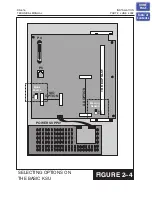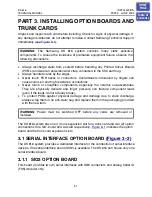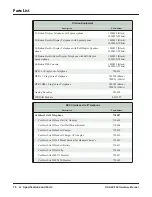
DS 616
INSTALLATION
TECHNICAL MANUAL
PART 5 JUNE 2002
5.1
PART 5. DS 616 SYSTEM CABLING
5.1 SAFETY PRECAUTIONS
To limit the risk of personal injury, always follow these precautions before connecting
TELCO circuits:
a. Never install telephone wiring during a lightning storm.
b. Never install telephone jacks in a wet location unless the jack is specifically
designed for wet locations.
c. Never touch uninsulated telephone wires or terminals unless the telephone line has
been disconnected at the network interface.
d. Use caution when installing or modifying telephone lines.
e. Do not use this product near water, for example, near a bath tub, wash bowl,
kitchen sink or laundry tub, in a wet basement, or near a swimming pool.
f. Do not use the telephone to report a gas leak in the vicinity of the leak.
g. Use only the power cord and batteries indicated in this manual. Do not dispose of
batteries in a fire. They may explode. Check with local codes for possible special
disposal instructions.
5.2 SYSTEM CABLING
All connections to the DS 616 system are made by the way of a main distribution frame
(MDF) except for the 120 VAC power and backup battery. All cabling to and from the
MDF should be made using ACA approved 0.4mm or 0.5mm twisted pair cable.
The main connection from the KSU to the MDF uses a cable assembly terminated with
an amphenol type connector on one end and a 25 pair 66m/50 block on the other. The
amphenol connector inserts into socket P4 on the KSU motherboard.
The first 20 pins of the amphenol connector are assigned to connections of trunk
interfaces on a trunk interface card. The next 6 pins are for connections of
miscellaneous circuits and the last 24 pins are assigned to connections of 12 DLI ports
on the mother board.
the retaining screw on the champ connector
should be secured to hold the connector in place on the KSU. This four pair modular
RJ45 connector plugs into socket P5 on the KSU.
Connection for the SLTs is via a 4-pair modular jack (RJ-45) on the motherboard.
HOME
PAGE
Table of
Contents














































